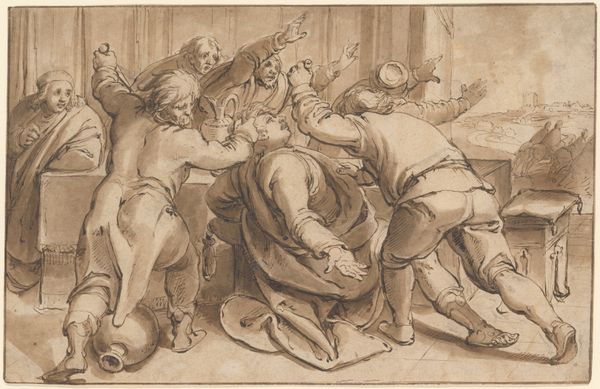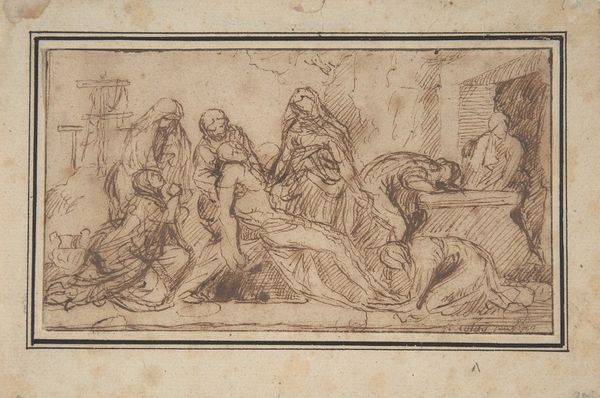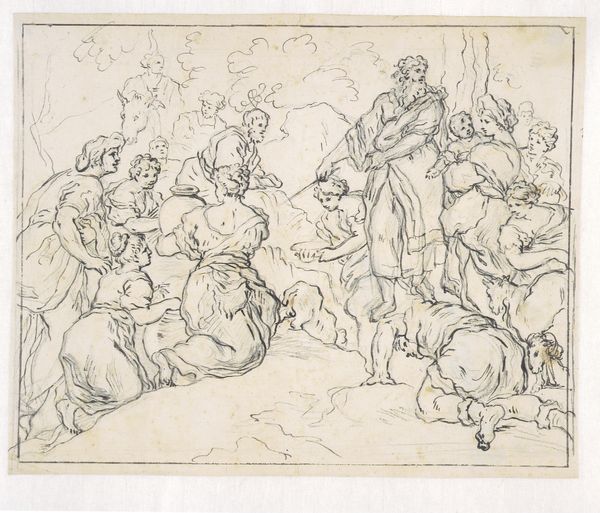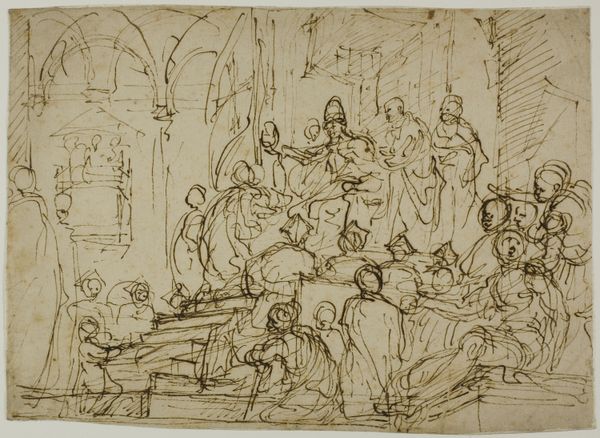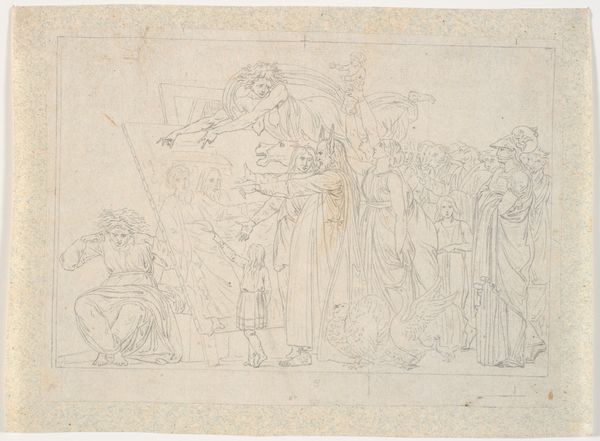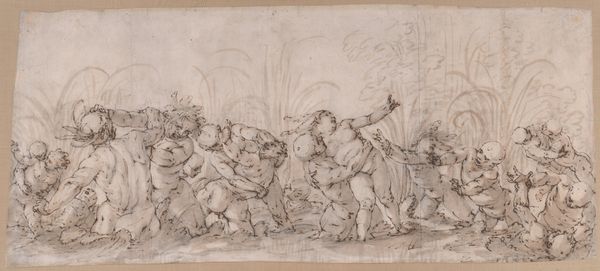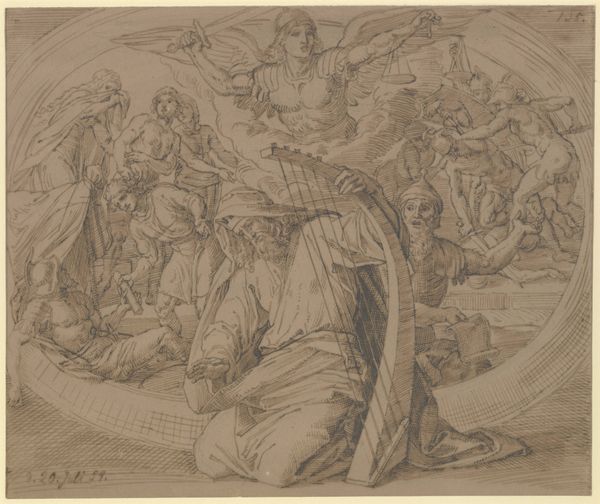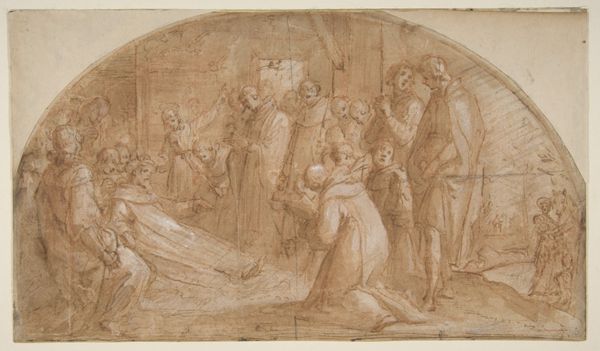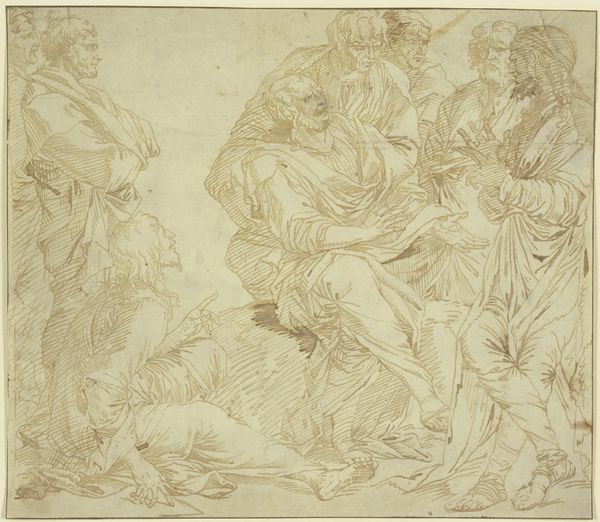
Dimensions: 326 mm (height) x 508 mm (width) (bladmaal)
Editor: Here we have Jacques François Joseph Saly’s pencil drawing, "Kampscene med faldne fjender," created sometime between 1717 and 1776. It’s an incredibly dynamic scene, all these figures crammed into the composition. It reminds me of a Roman frieze, but looser, more sketch-like. What do you see in this piece? Curator: The initial feeling of movement is interesting, especially in how Saly plays with implied violence versus depicted brutality. It calls upon our understanding of classical battle imagery. Do you notice how little explicit gore there is? The real weight resides in understanding war’s inevitable outcome. Editor: Now that you mention it, the fallen figures do seem...composed, I guess? More like resting than, well, dying. So it's not just a scene of chaos but a commentary on mortality itself? Curator: Exactly! Think of the Neoclassical era's fascination with moral narratives. It's a visual encoding of heroic virtue against the backdrop of human suffering, a timeless allegory meant to resonate beyond a specific historical event. The shields, helmets, the specific clothing—all point towards that grand narrative, but rendered with a touch of personal feeling. Editor: So, it's not just a depiction of a battle, but also a symbolic representation of values? How fascinating! Thanks, I learned a lot from your iconographic interpretation! Curator: Indeed. And it is in that tension between representation and symbolism that much of the artwork’s continued resonance resides.
Comments
No comments
Be the first to comment and join the conversation on the ultimate creative platform.
